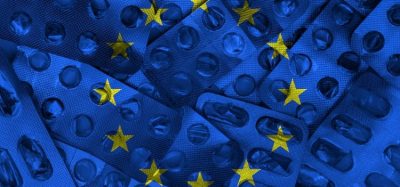Pharmaceutical analysis in quality control
Posted: 7 April 2008 | Bernd Renger, Director, Quality Control, Vetter Pharma-Fertigung GmbH & Co. KG | No comments yet
Pharmaceutical analysis in drug development mainly focuses on methods to identify and quantify potential new drug candidates, determine purity, identify by – products and degradation products in compatibility and stability studies, and to determine the drug substance’s fate in the organism. Challenging tasks like these require sophisticated techniques, dedicated equipment and methods operated by highly skilled staff, often with a good academic background.
Pharmaceutical analysis in drug development mainly focuses on methods to identify and quantify potential new drug candidates, determine purity, identify by – products and degradation products in compatibility and stability studies, and to determine the drug substance’s fate in the organism. Challenging tasks like these require sophisticated techniques, dedicated equipment and methods operated by highly skilled staff, often with a good academic background.
Pharmaceutical analysis in drug development mainly focuses on methods to identify and quantify potential new drug candidates, determine purity, identify by – products and degradation products in compatibility and stability studies, and to determine the drug substance’s fate in the organism. Challenging tasks like these require sophisticated techniques, dedicated equipment and methods operated by highly skilled staff, often with a good academic background.
The challenges that have to be faced in pharmaceutical quality control are different – techniques and methods must be well established and recognised. Robustness, not brilliance is the main feature to be accomplished by laboratories running under time and cost pressure using routine equipment operated by varying levels of experienced staff.
Accordingly, a review and the subsequent assessment of the developments in pharmaceutical analysis will generate different results when performed under this perspective.
In recent times, liquid chromatography – mainly high performance liquid chromatography (HPLC), has been established as the key analytical technique not only in drug development, but also in the routine quality control laboratory. However, although there is a continuing trend towards more and more hyphenated techniques like LC coupled with mass spectrometry (MS) used in development analysis, the “working horse” in the QC laboratories is still HPLC coupled with the unspecific ultraviolet (UV) or fluorescence detection. Even diode array has not yet fully replaced UV detection and refractive index (RI), electrochemical and light scattering detection have not found their way into routine applications too often. A second, widely used application is size exclusion chromatography (SEC), which is especially used to determine aggregates in biomolecules – the group of active pharmaceutical ingredients (drug substances) with steadily increasing importance.
The main advantage of LC is its widespread use in academia, education, development and routine over decades, resulting in generally accepted and universally applied approaches in method development and improvement as well as trouble shooting. Pharmacopoeias allow a certain level of adaptation and adjustments based on system suitability tests that enables laboratories to deal with slight variations in the analytical process, without having to consider complicated modifications requiring regulatory approval. In addition, LC’s robustness and reproducibility allows easy or only moderate complicated implementation at different sites with different analytical environments.
The steady progress in sorbent materials has now climaxed in the introduction of stationary phases with drastically reduced particle or pore size increasing selectivity, separation power and speed of analysis and thus higher throughput in the routine laboratory. The progress in development of various new stationary phases however, has not infiltrated the routine applications yet; here in most cases standard reversed phase RP 18 material is the column of choice.
Miniaturisation embracing instrumentation, column particle size, and column dimensions is the major current trend in LC. Most recent developments are the introduction of Ultra Performance Liquid Chromatography (UPLC) coupled to MS using columns with impressing reduced particle sizes of stationary phases and as a second progress, the development of monolithic phases consisting of one single silica monolith with a total porosity of higher than 80 %. These techniques have already made their way to the development laboratories, but still have to find more routine applications.
UPLC or the use of monolithic phases also allows separation of peptide digests in proteomic and genomic research. It seems also that its fast widespread introduction has retarded the further rise of capillary electrophoresis (CE), another high performance separation technique. CE has long been regarded as an ideal complementary separation technique with LC, as its separation mechanism is different – mainly based on charge to mass ratio, or on differences in hydrophobicity. Having also advantages as a miniaturised technique with lower solvent and reagent consumption, CE was considered a method of choice for fast routine applications. It became more and more evident however, that the miniaturisation implicates a lower reproducibility or repeatability – in many cases it turned out those CE methods did not provide the robustness required in a routine laboratory.
So even if CE must be considered the superior technique for applications like chiral separations, protein analysis and genome sequencing, it might well be that its use will be more or less limited to research and development, whereas the routine quality control laboratories will further rely on techniques for protein testing like iso-electric focusing or gel electrophoresis.
Gas chromatography (GC), as already outlined in last years’ review, is a constant in a pharmaceutical laboratory’s equipment list. Besides the mentioned application of quantifying residual solvents and organic volatile impurities, this technique plays an increasingly important role in compatibility and stability studies when analysing interactions with leachables and extractables especially from plastic packaging materials.
Thin layer chromatography (TLC) in its basic version as a semi-quantitative technique using visual comparison of sample spots with spots of references material as a simple method for purity testing of drug substances, is becoming less and less important in quality control as Pharmacopoeias worldwide switch purity tests to the ubiquitary LC methods. But the introduction of quantitative techniques like scanning or video-densitometry – although less sensitive and reproducible compared to quantitative LC techniques – and the development of high performance thin layer chromatography, (HPTLC) have opened new applications for TLC. Complex or “dirty” matrices like crude plant extracts or traditional herbal drugs are made accessible to quantification of the separated lead compounds in that way. The various options to couple TLC or HPTLC with numerous post chromatographic detection and identification techniques like matrix assisted laser desorption ionization and time of flight detection (MALDI-TOF) enables analysts to easily identify separated compounds.
One aspect of all quantitative separation techniques that has been carelessly neglected over decades has started to gain the focus it deserves – also driven by the newly introduced general chapter of the United States Pharmacopoeia named “Analytical Data – Interpretation and Treatment”: a proposed procedure’s variability, robustness and as the consequence the capability to control certain given specification limits. There are countless examples of tight specifications limits set over ambiguously in regulatory filings that do not correspond to the proposed analytical procedures’ performance parameters. The detailed US Food and Drug Agency’s Guideline; how to deal with analytical results that do not comply with specifications or expectations (“out of specification results” [OOS results]) are at least to a certain extend triggered by these inconsistencies. Interestingly, 2007 saw the issuing of the first software that allows a prediction of an analytical procedure’s overall uncertainty based on the uncertainties of the individual steps.
Even if it may be trend in many cases to shift from traditional pharmacopoeial testing methods like wet chemistry or colour reactions for identity “to separation techniques because the resolution they offer gives enhanced information about the sample” in the long run, these compendial methods still play an important role in the routine quality control testing not only of bulk drug substances but also of finished products. It is one of the disappointing developments that the attempts by the pharmacopoeial authorities of the US, EU, and Japan to harmonise the worldwide divergent standards and methods through the Pharmacopoeial Discussion Group (PDG) within ICH still have not resulted in a full success yet. The final draft of the general ICH Guideline Q4B has reached step 5 of the process in late 2007, and is in the process of adoption by the regulatory bodies of the EU, Japan and USA. But the extremely slow pace of the harmonisation process for simple tests like residue on ignition/sulphated ash must be considered frustrating given the high safety margins and the relatively low meaning of these tests. It seems anachronistic that starting materials for drugs and drugs themselves to be marketed worldwide still have to be tested in parallel to comply with different national pharmacopoeial standards.
The persistence in defending local practices unveiled by the regulatory bodies of the three regions when it comes to harmonise simplest end point test procedures, is in sharp contrast to the vision of process analytical technology (PAT). This new approach intends to replace finished product testing based on small sample numbers by continuous, risk-based monitoring of production processes and subsequent parametric release. Analytical techniques that would fit into this real-time vision of process surveillance are near infrared (NIR) or mid-IR spectroscopy and Raman spectroscopy, all of them techniques not too widespread in pharmaceutical analysis – with the exception of NIR that has made its way to starting material testing, especially single container testing. Like the years before, in 2007 there have been more symposia, conferences and education courses on that topic as documented examples of its application in pharmaceutical manufacturing, indicating that this paradigm shift has yet to come. One major obstacle is the fact that defining a meaningful “design space” for easier variation change control and a meaningful “control space” for PAT requires far more information and know how about critical processes steps and effects than usually available and existing during drug development. Therefore it might be more appropriate to apply this approach to mature, long running products rather than on new developments – making the concept an inconclusive one. Measurable effects on analytical trends in pharmaceutical quality control must not be expected in the near future.
Bernd Renger
Director, Quality Control, Vetter Pharma-Fertigung GmbH & Co. KG
Dr. Bernd Renger is Director of Quality Control at Vetter Pharma in Ravensburg, Germany. Vetter Pharma is an independent contract manufacturer specialising in the aseptic production of pre-filled application systems. Dr. Renger started his professional career with Hoechst AG as a Research and Development Chemist. Since then, he has held positions as Director of Quality Control and/or Quality Assurance at Mundipharma (Limburg), Altana Pharma (Singen) and Baxter BioScience (Vienna). He holds a degree in Organic Chemistry from the University in Giessen, Germany and is an appointed Qualified Person according to the European regulations. He has experience in designing and implementing Quality Systems and in managing various national and international inspections, including FDA inspections and ISO certifications. He also holds the position of Chairman of the new European Qualified Person Association.









